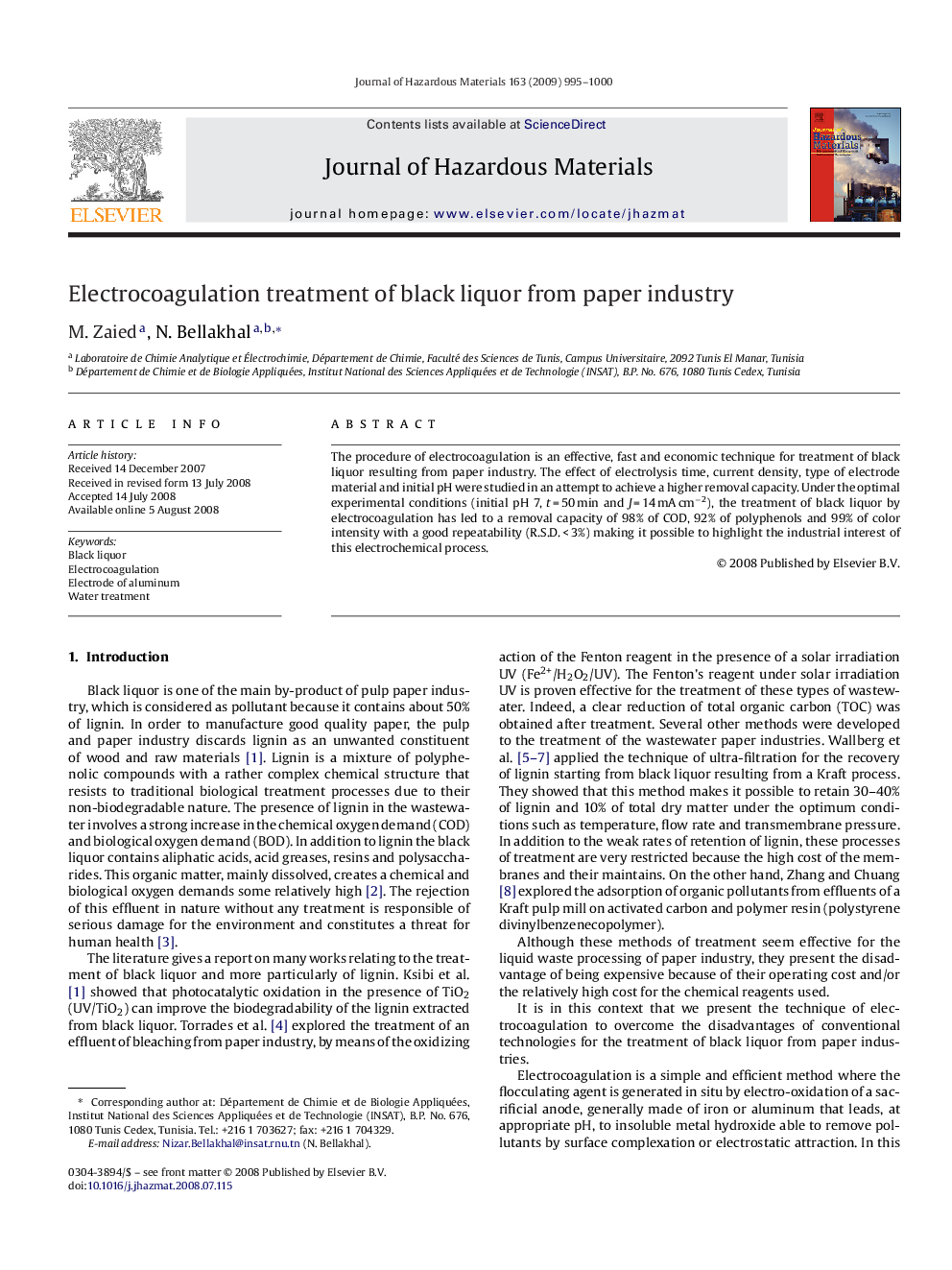| Article ID | Journal | Published Year | Pages | File Type |
|---|---|---|---|---|
| 582151 | Journal of Hazardous Materials | 2009 | 6 Pages |
Abstract
The procedure of electrocoagulation is an effective, fast and economic technique for treatment of black liquor resulting from paper industry. The effect of electrolysis time, current density, type of electrode material and initial pH were studied in an attempt to achieve a higher removal capacity. Under the optimal experimental conditions (initial pH 7, t = 50 min and J = 14 mA cmâ2), the treatment of black liquor by electrocoagulation has led to a removal capacity of 98% of COD, 92% of polyphenols and 99% of color intensity with a good repeatability (R.S.D. < 3%) making it possible to highlight the industrial interest of this electrochemical process.
Related Topics
Physical Sciences and Engineering
Chemical Engineering
Chemical Health and Safety
Authors
M. Zaied, N. Bellakhal,
